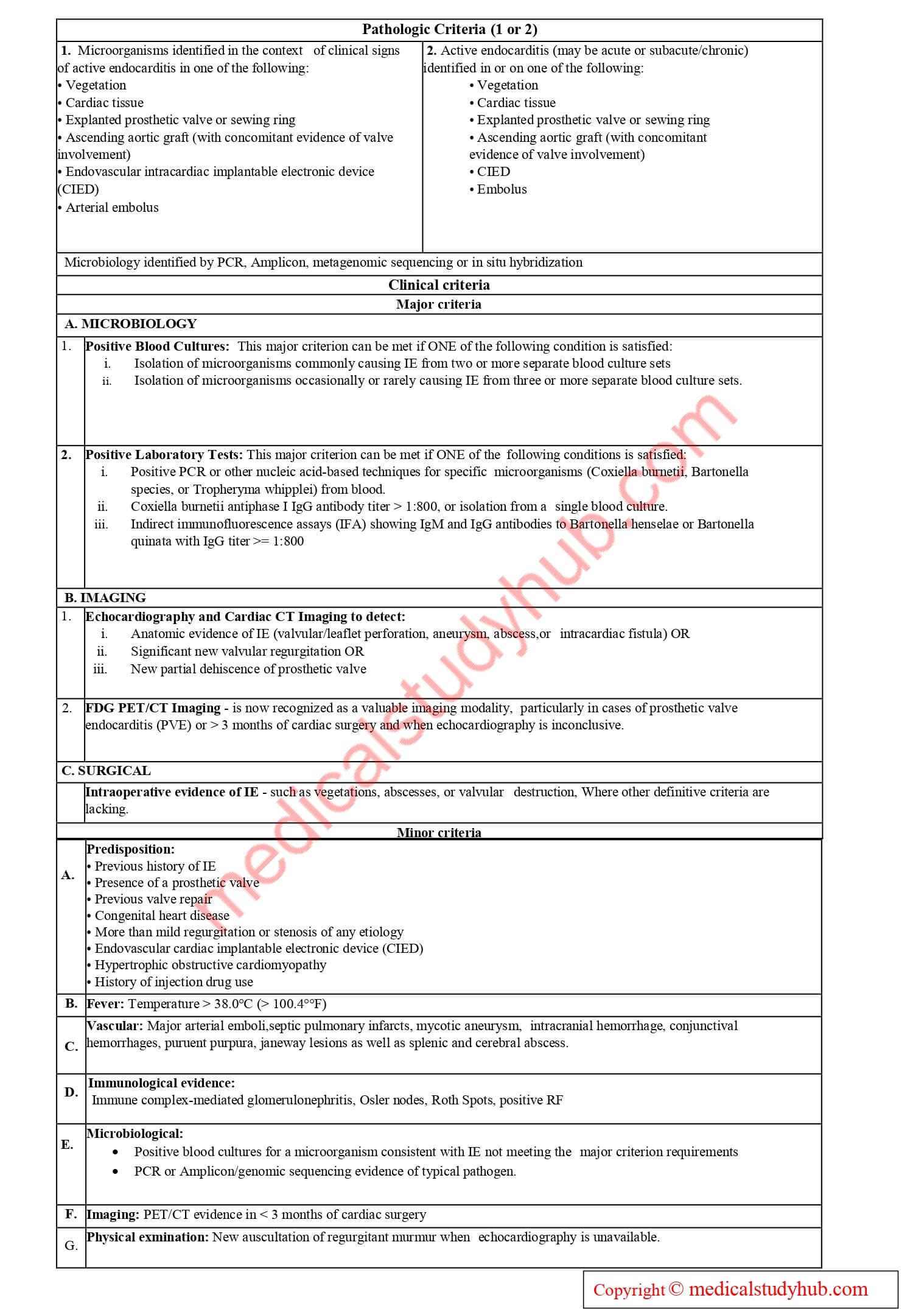Infective endocarditis (IE) is a life-threatening condition and the Duke criteria (established in 1994 and revised in 2000) has been fundamental for the diagnosis of the disease. However, the landscape of micro-biology, diagnostics, epidemiology, and treatment for lE has evolved significantly over the years. The 2023 modified Duke criteria address these changes:
- Incorporation of advanced microbiological techniques such as PCR and genomic sequencing.
- Introducing surgical inspection as a major diagnostic criterion.
- Eliminating the need for separate venipunctures and specific timings for blood culture.
- Utilizing Cardiac CT and FDG PET/CT for enhanced imaging.
- Including splenic and cerebral abscesses as vascular manifestations.
- Recognizing regurgitant murmurs via physical examination as a diagnostic indicator.
The diagnostic criteria for IE are divided into 3 categories:
I. Definite endocarditis
A. Pathologic Criteria
B. Clinical Criteria:
- 2 Major criteria OR
- 1 Major criterion and 3 minor criteria OR
- 5 Minor criteria
Il. Possible endocarditis
A. Clinical criteria only
- 1 Major criterion and 1 minor criterion
OR - 3 Minor criteria
IlI. Rejected endocarditis
A. Firm alternate diagnosis explaining signs/symptoms OR
B. Lack of recurrence despite antibiotic therapy for less than 4 days OR
C. No pathologic or macroscopic evidence of IE at surgery or autopsy, with antibiotic therapy for less than 4 days OR
D. Does not meet criteria for possible IE, as above
Updated (2023) Modified Duke Criteria for Infective Endocarditis:

References:
https://www.researchgate.net/publication/370520403_The
_2023_Duke-ISCVID_Criteria_for_Infective_Endocarditis
_Updating_the Modified_Duke_Criteria#:~:text=The
%20resulting%202023%20Duke%2DISCVID,of%20intraoperative
%20inspection%20as%20a


